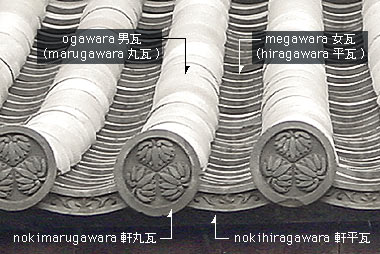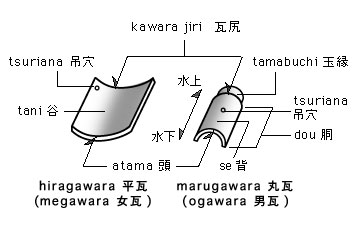| Lit. female tile. Also called migawara. Also
written 雌瓦, or 牝瓦. A 7 -12c term for a broad concave roof tile fundamental to
the construction of a tiled roof *kawarayane
瓦屋根. Examples can be found in the SHOUSOUIN MONJO 正倉院文書 (mid-8c). Megawara
were laid first, edges curving upwards, and covered the entire roof. Tiny gaps
occurred where the sides of the tiles met, so half-round convex cover tiles *ogawara
男瓦 (male tiles) were then overlaid to cover these gaps. Compared to the modern
concave roof tile *hiragawara
平瓦, megawara tiles included a much greater diversity of large and small
tiles, and also had a deeper upward curve than similar tiles used today. Like
the ogawara, megawara design varied according to period and purpose.
In Kyuushuu 九州, bamboos of medium to large diameter were split in half, lengthwise,
and used alternately with one half facing upward and the other half used as seam
covers, in the same way the tiles were used. |


